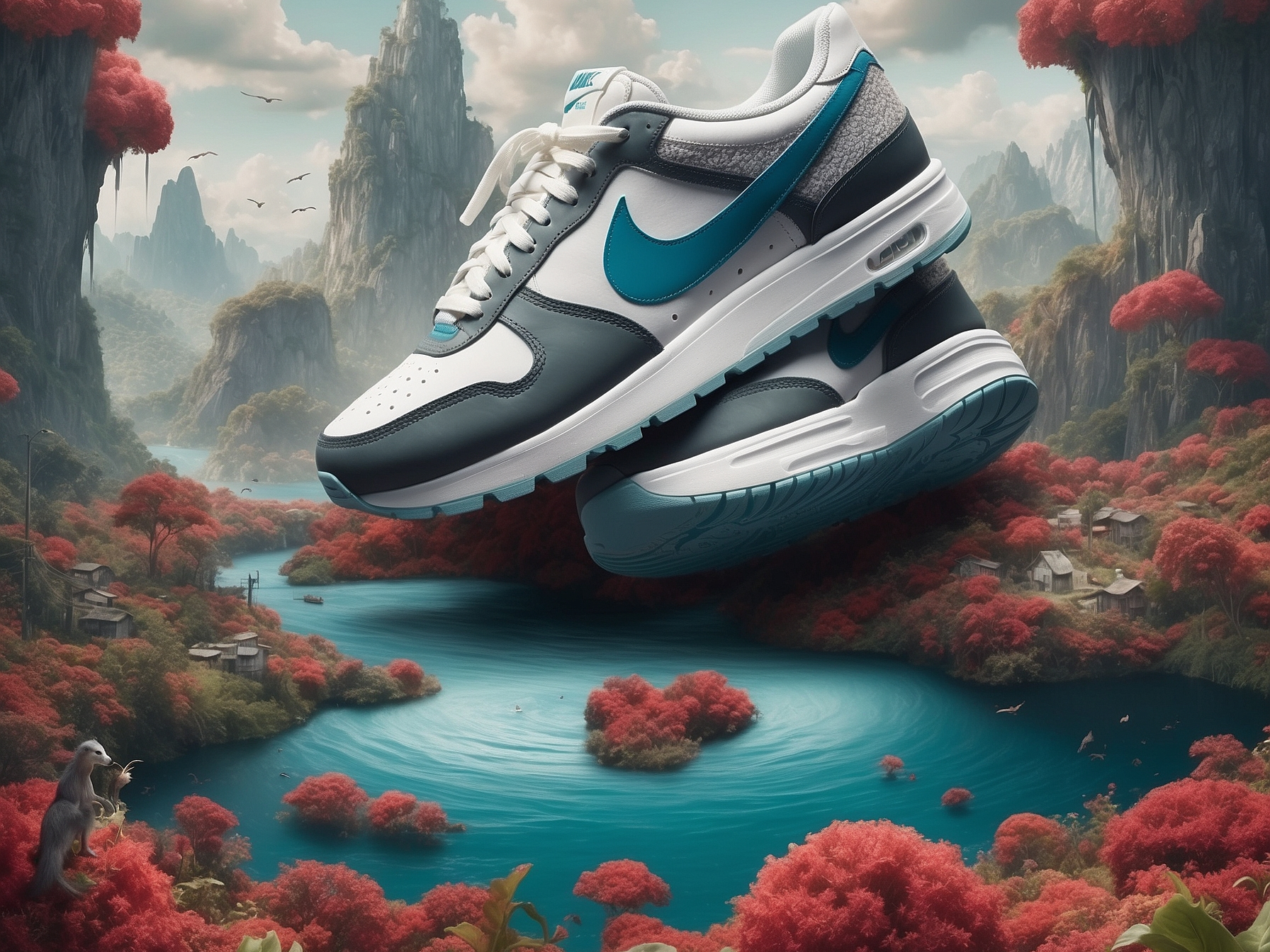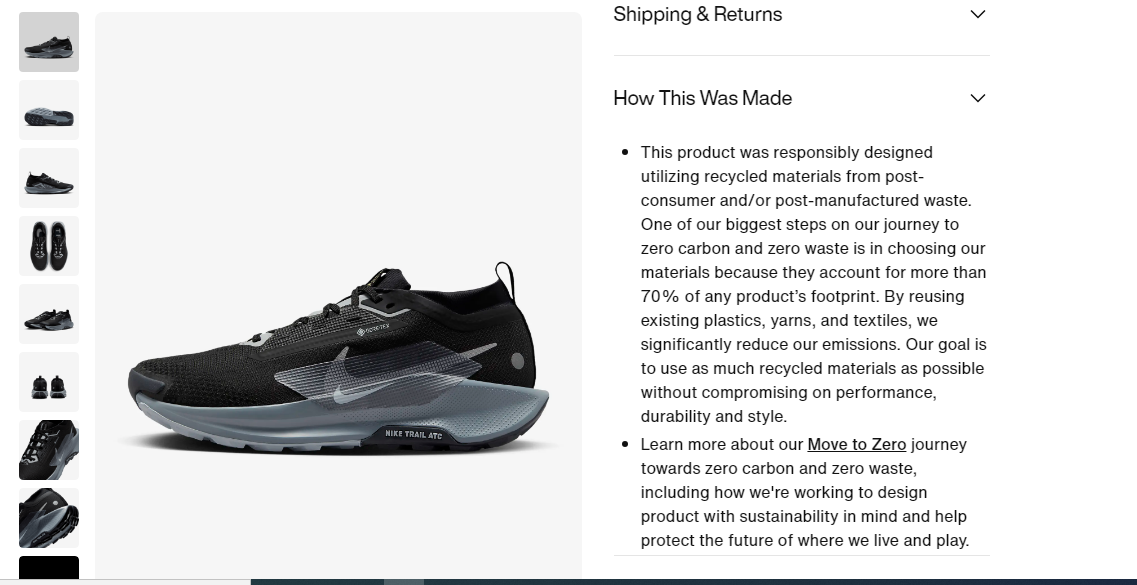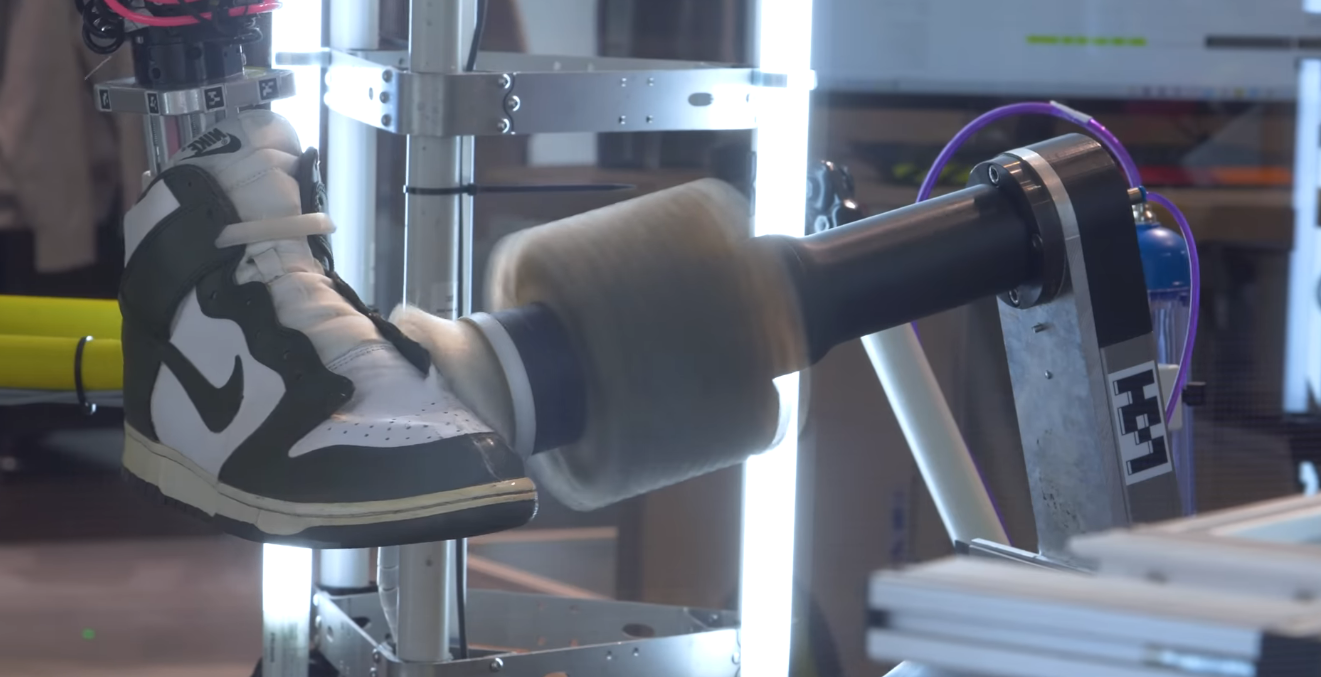Nike, the global sportswear giant, isn’t just known for its flashy sneakers and celebrity endorsements—it’s also a masterclass in supply chain drama. From labor rights scandals to sustainability slip-ups, Nike’s challenges are like the reality TV of business world mishaps. But hey, even the big players fumble, and that’s where the real lessons lie for small business owners.
From dealing with ethical dilemmas to figuring out how to make your operations greener without going broke, Nike’s rollercoaster ride offers plenty of takeaways.
Think of it as a guidebook on what to do—and definitely what not to do—when growing your business, because understanding Nike’s supply chain saga might just be the boost your business needs to avoid costly mistakes, build customer trust, and keep those profit margins on the up and up!

Nike’s been catching some serious flack for its sweatshop practices—yep, we’re talking about the kind of places you wouldn’t even want to visit on a vacation. Reports have shown that workers in spots like Indonesia, China, and Vietnam are slogging through grueling hours, pocketing tiny wages, and putting up with conditions that are, to put it mildly, pretty grim.
More recently, investigations have uncovered that many garment workers in India, including those in Nike’s supply chain, are making less than the legal minimum wage.
Oh, and let’s not forget the company’s less-than-stellar response to laid-off workers during the COVID-19 pandemic, particularly in Cambodia.
To top it all off, there have been allegations of child labor and forced labor popping up, which really makes you wonder what’s going on behind the scenes.
In response to past criticisms, Nike has enhanced its monitoring efforts, including increasing factory audits and raising the minimum age of workers in its supply chain. This shift came after significant public pressure in the 1990s regarding sweatshop conditions.
It has also developed a Responsible Sourcing program that includes rigorous supplier assessments and audits to ensure compliance with labor standards. Nike aims to work only with suppliers that adhere to its Code of Conduct, which prohibits forced labor and mandates safe working conditions.
Nike increased its engagement with Labor Rights Groups especially about layoffs and pay cuts during the COVID-19 pandemic to address their concerns and improve labor practices.
If you want to build a great business where you DON’T exploit people like Nike sometimes does… the 8D Framework To Launch Your Business Will give you everything you need.
It’s a step-by-step guide that takes you from “I just have an idea” to “I have a structured business and I know exactly what to do”. It explains everything business/startup-wise, from ideation, product creation, marketing, finance, all the way to the legal stuff. You can get it here:
Activist investors have expressed concerns over Nike’s transparency regarding its supply chain practices. They argue that the company lacks a robust remediation process for workers who experience rights violations, which could lead to ongoing issues like wage theft and inadequate responses to grievances.
Nike began publishing the names and locations of its factories in its 2005 Corporate Social Responsibility (CSR) report. This move was intended to increase accountability and transparency concerning labor practices in its supply chain.
Nike’s manufacturing processes contribute to climate change, toxic pollution, and excessive water use.
Challenges:
Despite some progress in reporting emissions and setting targets for sustainability, the company has been criticized for its slow transition to sustainable materials.
Recent scrutiny has highlighted that not all products marketed as sustainable meet rigorous environmental standards, leading to concerns about potential “greenwashing”.
The company was hit with class action over ‘Greenwashed’ Sustainability Claims. The lawsuit alleges that only 239 out of 2,452 products in Nike’s “Sustainability” collection are actually made with recycled materials, while the rest are made from virgin synthetic materials. It argues that recycled polyester and nylon are still plastic and not biodegradable.
It set ambitious targets to reduce its environmental footprint. By 2020, it aimed to decrease its environmental impact by at least 10%, achieve 100% renewable energy in its operations, eliminate footwear waste during manufacturing, and reduce hazardous chemical discharges, but it did not fully achieve all of them.
While Nike has made strides in renewable energy use, its overall water consumption has increased, countering its target to reduce freshwater use by 25% by 2025. This indicates a disconnect between stated sustainability goals and actual practices.
Nike’s approach to ethical supply chain management
With all these hiccups, the company continues to set ambitious targets for the future, aiming for further improvements by 2025 and beyond.
For example, Nike has partnered with the Sustainable Apparel Coalition to incorporate eco-friendly materials, such as organic and recycled cotton, into its products. This initiative helps reduce waste and water consumption during production.
The company aims to create a closed-loop manufacturing process that focuses on using recycled consumer waste. This approach is part of Nike’s broader sustainability philosophy known as “Considered Design” which emphasizes designing products with minimal environmental impact.
Reuse-A-Shoe Program
Launched in 1990, this program aims to collect and recycle worn-out shoes, transforming them into new materials like “Nike Grind.” Since its inception, Nike has collected over 28 million pairs of shoes, contributing to waste reduction
Eco-Friendly Initiatives
Nike has recently introduced several eco-friendly materials as part of its commitment to sustainability. These materials aim to reduce environmental impact while maintaining product performance and quality.

Nike Shoe made from Sustainable Materials
These initiatives reflect Nike’s broader strategy to integrate sustainability into its product lines, aiming to minimize waste and environmental impact while meeting consumer demand for eco-friendly products.
As of 2023, approximately 39% of Nike’s materials are classified as environmentally preferred, which includes recycled materials, organic cotton, and materials sourced through initiatives like the Better Cotton Initiative (BCI). This percentage reflects Nike’s ongoing efforts to improve sustainability in its product offerings, although it has not yet reached its target of 50% by 2025.
Reduction in Carbon Emissions
Nike has reported that using 39% environmentally preferred materials has led to a reduction of approximately 182,611 metric tons of CO2 emissions. This demonstrates a direct correlation between the use of recycled materials and lower carbon emissions, as these materials typically require less energy to produce compared to virgin materials.
Nike has encountered several sales issues in its supply chain, primarily related to excess inventory and shifting consumer demand and has made positive efforts to address these problems.
In late 2022 and early 2023, Nike reported a significant increase in inventory levels, reaching a record 44% rise in the first fiscal quarter of 2023. This excess inventory was largely due to supply chain disruptions caused by the COVID-19 pandemic, which led to late deliveries and an accumulation of seasonal products that were not selling as expected.
Added to the disruption caused by the pandemic, consumer buying patterns shifted, with many opting for value-priced items over more expensive branded products. This change in behavior left retailers, including Nike, with an inventory of goods that were no longer aligned with current consumer preferences.
In order to resolve these issues, Nike began aggressive liquidation of excess inventory. This includes discounting slow-moving items and shifting them to off-brand retailers and dollar stores to make way for newer products.
To better manage the inventory levels, Nike enhanced its forecasting methods. The company leveraged artificial intelligence (AI) and machine learning (ML) technologies to predict consumer buying patterns more accurately and to adjust supply sourcing accordingly. This shift helped also to prevent future excess inventory situations by aligning production more closely with actual market demand.
In a bit to further improve its sales, Nike also expanded its direct-to-consumer sales channels, reducing reliance on traditional retail outlets. This strategy allows the company to have more control over inventory and sales, enabling it to respond more quickly to changing consumer preferences and market conditions. It also allows the company to reach customers in various regions without relying on physical stores, thus mitigating risks associated with geopolitical instability.
Nike’s efficiency problems can be traced back to their old-school reliance on manual labor. While manual labor has been a staple for Nike for ages, it’s also like using a rotary phone in the era of smartphones—slow and kinda outdated.
Manual processes can turn production into a bit of a crawl, causing bottlenecks, order delays, and higher costs. They’re also more prone to mistakes, inconsistencies, and quality issues, which means more rework, waste, and a general messiness in operations.
To tackle this, Nike’s been tossing cash into automation and robotics like it’s going out of style. They’ve teamed up with companies like Geek+ and Fetch Robotics to bring in a squad of autonomous mobile robots to zip around their warehouses and keep things running smoother.

Nike Robot that cleans shoes
It has installed over 1,000 collaborative robots (cobots) across its distribution centers, which assist in sorting, packing, and moving products. This initiative has reportedly tripled the company’s digital order capacity in regions including North America, Europe, and the Middle East.
In Japan, Nike has integrated more than 200 robots from Geek+ at its new distribution center in Chiba, enabling same-day delivery. These robots facilitate the goods-to-person model, enhancing picking efficiency and reducing operational costs.
Nike, just like a lot of big companies, has its hands full dealing with geopolitical messes.
Trade squabbles, political upheaval, and the occasional natural disaster can throw a wrench into their supply chain, causing costs to skyrocket, orders to drag, and their reputation to take a hit.
All of this means Nike’s got to stay on its toes with some seriously agile strategies and risk management plans to keep things ticking and stay out of trouble.
Nike’s been dancing around some serious trade tension drama, especially with the U.S. and China throwing tariffs and trade barriers into the mix. With a hefty chunk of Nike’s production happening in Asia, these trade spats have really stirred the pot.
To dodge the worst of it, Nike’s been shaking up its supply chain strategy. They’ve cut back on the percentage of goods coming from China, and only about 10% of what they make there ends up in the U.S., keeping them out of the worst tariff trouble.
Instead, they’ve been moving production to places like Vietnam, where labor is cheaper and tariffs aren’t such a headache. By 2019, they were getting around 23% of their footwear and 27% of their apparel from China, but most of that wasn’t headed for the U.S. market.
Despite the trade war drama, Nike’s still cruising along with solid financials. Their sales in China are booming, with a 22% revenue jump there—way ahead of their overall sales growth. It just goes to show that even with trade tensions, a strong brand and loyal customers can keep you in the game. Small businesses, take note: beefing up your brand and keeping customers happy can help you weather the storm.
When political drama hits manufacturing hubs like Vietnam and Indonesia, Nike feels the pinch. Strikes, production hiccups, and rocky supplier relationships can shake things up, and Nike’s pretty reliant on these places for its gear.
Take the Russia-Ukraine conflict, for instance. It threw a wrench in Nike’s operations, with trouble importing goods into Russia and sanctions messing up the flow of commercial activities and payments.
Nike’s Russian franchisee couldn’t keep up with supplies, which nudged Nike to exit the Russian market. They shut down online sales, closed all their stores, and didn’t renew their franchise deal with Inventive Retail Group, their big retailer in Russia.
To bounce back, Nike’s zeroing in on the Asia-Pacific region—think Vietnam, Indonesia, and India—where the market is growing thanks to more disposable income and a rising interest in sports.
They’re also eyeing Latin America for new opportunities and trying to beef up their presence in Western Europe, where the geopolitical tensions aren’t as intense.

Email subscription is available ONLY TODAY (oh, okay, and tomorrow).
Surely, we respect your inbox! Unsubscription works every day.

We’d love to tailor your experience — which of these best describes you?